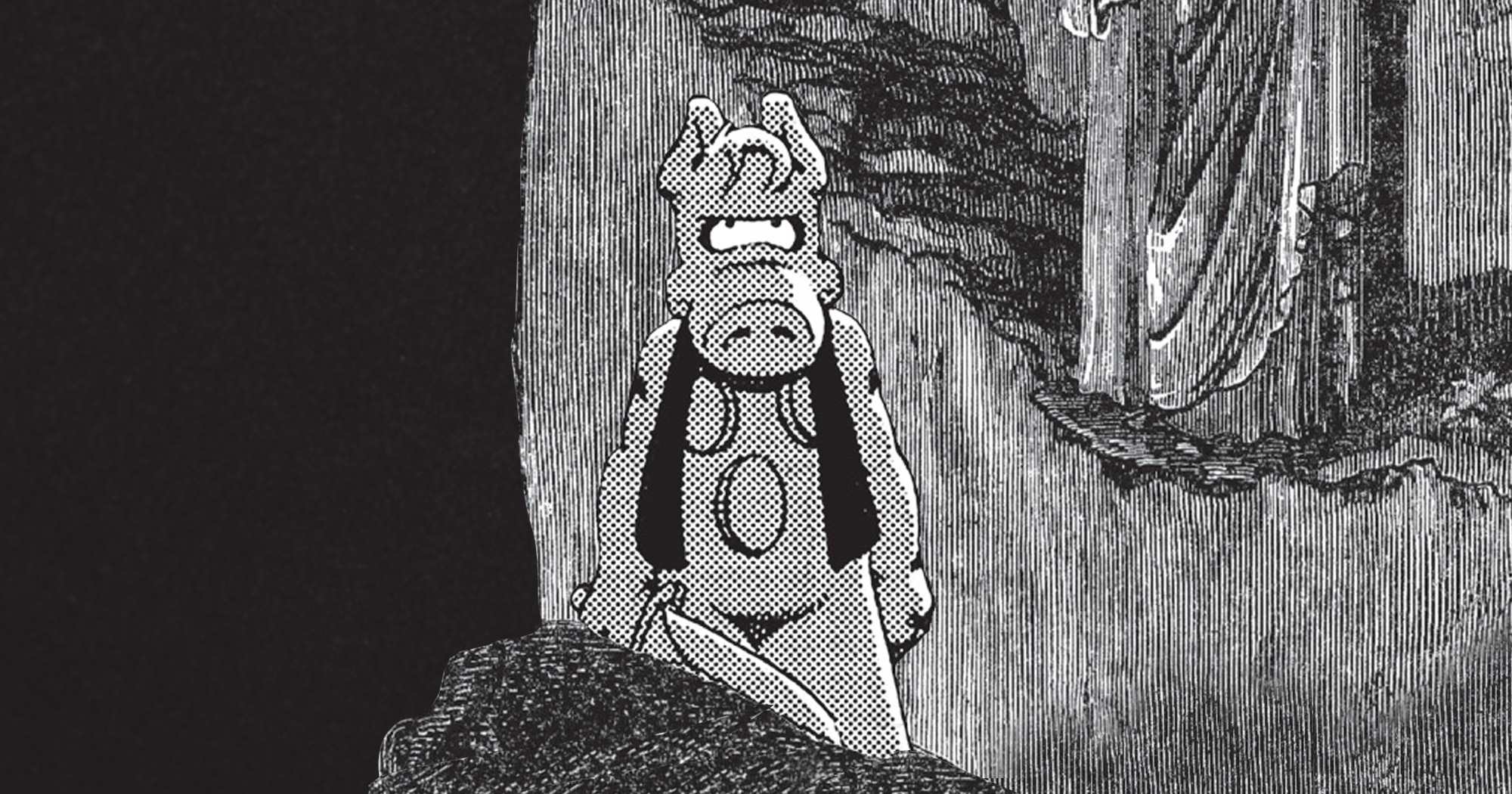The Life, Death, and Return of Cerebus; Speaking With Graphic Novelist Dave Sim

Independent comics was a very different scene before Cerebus, by Dave Sim, came along. What started as a funny-animal parody of Conan and superhero comics soon developed into a complex tale about life, love, religion, politics, Ernest Hemingway, F. Scott Fitzgerald, and God. “Cerebus Syndrome” is now a recognized term (often used, strangely enough, to describe television shows) for a work of fiction in which there’s a shift toward greater drama as a series continues. Cerebus was notable for its long run (from 1977 to 2004), but perhaps moreso because it redefined what comics could be––idiosyncratic, funny, as well as moving and sophisticated.
Since Cerebus ended (with the death of the title character), Sim has worked on other projects such as his graphic novel Judenhaas, with its focus on anti-Semitism (or as Sim more accurately calls it, “Jew hatred”), and the fashion parody Glamourpuss, but recently experienced some health problems that forced him to give up drawing. Thus, many surprised comics fans happily noted an item that shipped in September from Sim and his business partner, Sandeep Atwal: Cerebus in Hell?.
The Cerebus in Hell? project, Sim said, “resulted from finding a way around the [wrist] problem.” As a concession to Sim’s injury, the artwork consists of borrowed backgrounds, with images of Cerebus the Aardvark Photoshopped into drawings by nineteenth century French artist Gustave Doré, famous for his illustrations of Dante’s Inferno and other works. Cerebus in Hell #0 will lead into a 4-issue miniseries , featuring new, never-before-seen strips similar in format to the ones currently appearing at Sim’s website.
Each strip runs four panels, a vast change from the open-ended, sprawling stories of the original series. About the new format, Sim said, “[It’s] liberating in that every strip is a blank slate with no limit to the premise. [It’s] limiting because Sandeep and I have only four panels to tell the entire story.”
Like the original run of Cerebus, Cerebus in Hell? is, first and foremost, funny. Sim and Atwal’s humor runs from classical references (Plato and Aristotle arguing about their interpretations of God) to comments on modern-day politics (Cerebus is revealed as a Trump supporter) to obscure comic book references (a Silver Age Steve Ditko plague of locusts).
2017, when the four issue Cerebus in Hell? mini-series will be published, marks the 40th anniversary of Cerebus the Aardvark. During those four decades, Sim has earned a bevy of awards including multiple Harvey, Kirby, and Joe Shuster Awards, plus an Eisner Award, an Inkpot Award, and more.
The original Cerebus series ran 300 issues and approximately 6,000 pages—a monumental achievement considering the detailed scripting and artwork by Sim and his background artist Gerhard, as well as the barriers to self-publishing in the pre-digital age. Those issues are now available in several formats: print, digital, and even an audio/video combination, with Sim reading the text aloud.
With comics and graphic novels more accepted as a valid art form today than they were back in 1977, it’s important to recognize Sim’s impact on the medium, but perhaps more important to introduce younger readers, or noncomics readers, to his work. Although Sim has devoted much of his attention to preserving the legacy of Cerebus—often under fire because of his sometimes controversial views on feminism, religion, and politics—Cerebus in Hell? is proof that Sim’s creative mind is undiminished. So, for those readers who might be unfamiliar with Cerebus, or intimidated by the idea of embarking on a 6,000 page journey with a character they’ve never met, Cerebus in Hell? might make for a good introduction.
How long will Cerebus last in the netherworld? When asked about the long-term prospects for Cerebus in Hell?, Sim stated simply, “We’ll keep it going as long as we can keep it funny.”

Peter Dabbene wrote the graphic novels Ark and Robin Hood. He is a reviewer for Foreword Reviews, and his poetry and stories have been published in many literary journals, collected in the photo book Optimism, and in the story collection Glossolalia. His latest books are Spamming the Spammers and More Spamming the Spammers.
Peter Dabbene
